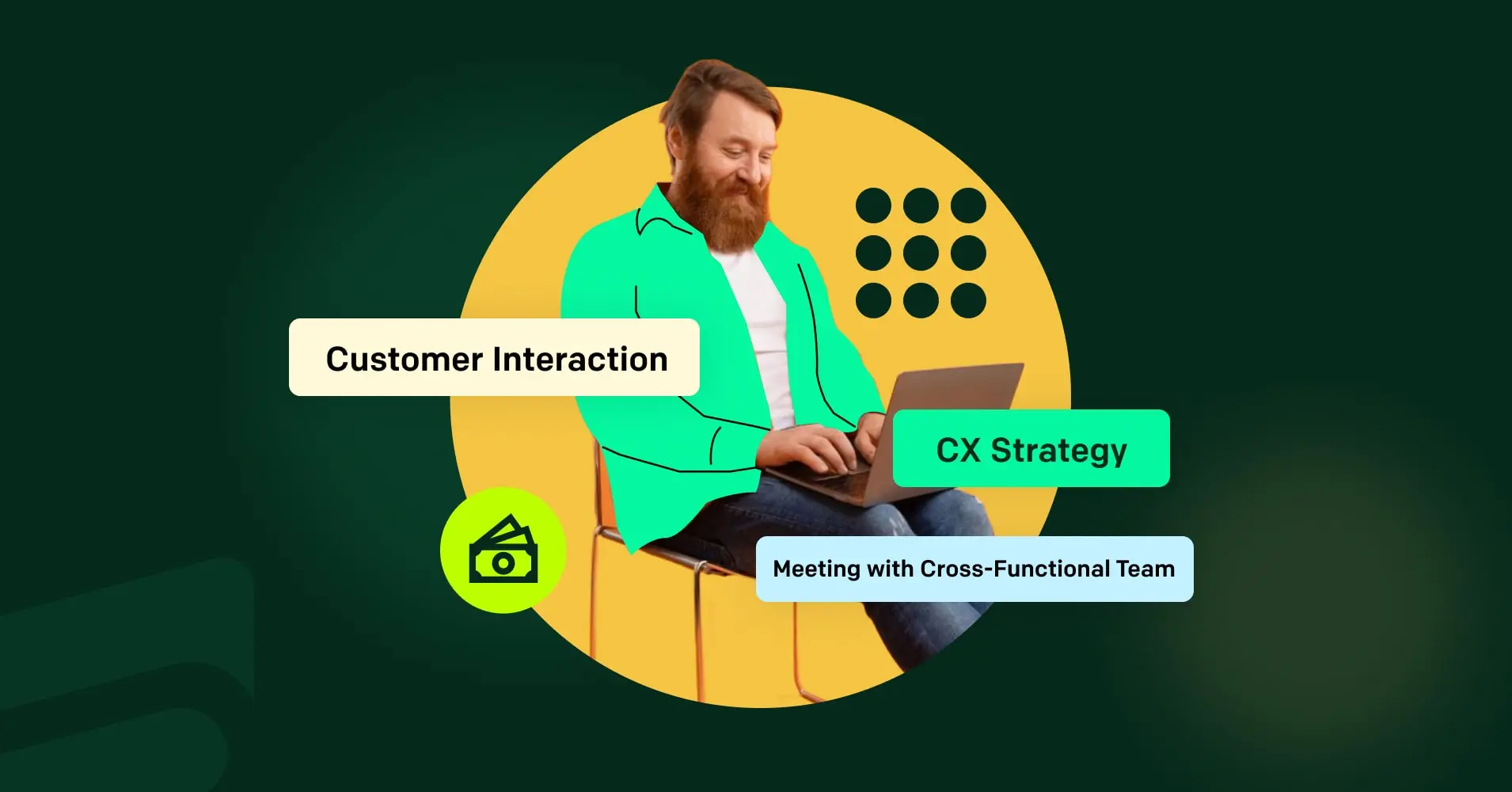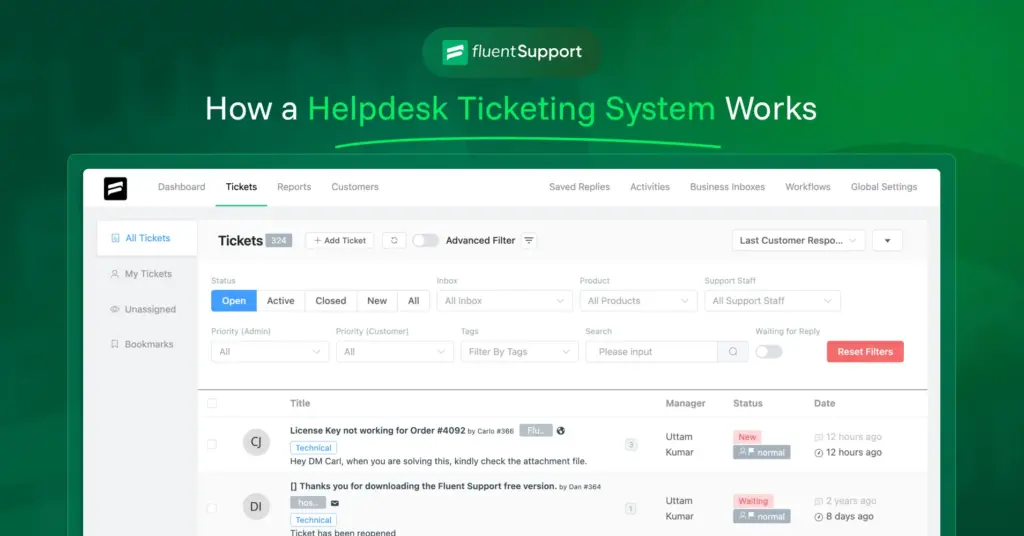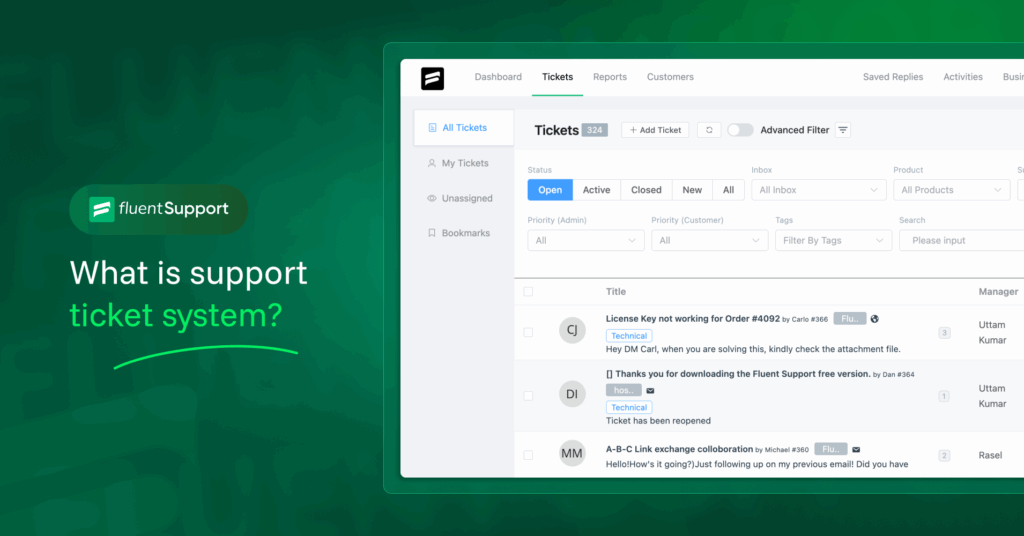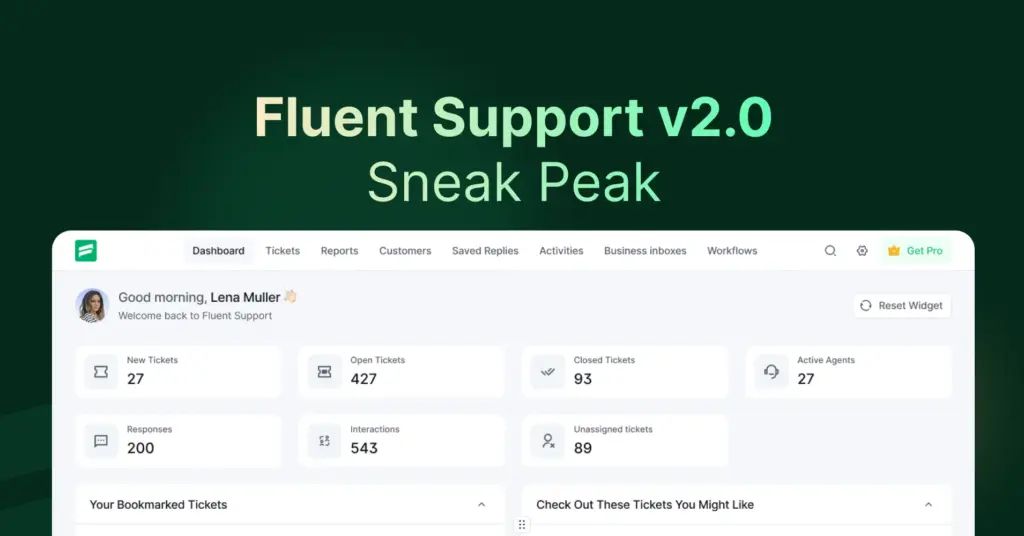
What is a Customer Experience Manager (CEM)?
By Md. Sajid Sadman
July 1, 2024
Last Modified: December 27, 2024
In 2025, businesses are heightening their efforts to provide exceptional customer service and build solid relationships with customers. And, a business can achieve all of these by ensuring memorable customer experience at every touch point.
Now, you must be wondering about job roles related to customer experience that can turn these efforts into reality. Yes, a skilled Customer Experience Manager (CEM) can make a significant impact on this.
In this blog, you will get a well-rounded notion about Customer Experience Manager (CEM).

What is a Customer Experience Manager
A Customer Experience Manager (CEM) is a company professional dedicated to ensuring a better customer experience at every touchpoint of a customer’s journey.
Generally, an experienced Customer Experience Manager has expertise in exceptional customer interactions. With expertise, he orchestrates and enhances the interactions between the customers and the brand they work for.
It’s like developing a smooth connection and bridging the gap between the two parties.
Moreover, a Customer Experience Manager is a strategic leader within an organization. Following his role, he consistently crafts strategies to shape and enhance a business’s overall customer satisfaction and loyalty.
When a CEM actively works for a company, the possibility of championing customer-centric initiatives increases. Plus, the overall customer journey becomes more seamless.
From now on, if you ever wonder what a Customer Experience Manager is, consider the role as the core of any company’s business growth.
What does a Customer Experience Manager do?
The role of a Customer Experience Manager may vary from company to company, but the key responsibilities remain consistent. For your kind information, the role of a Customer Experience Manager is more general than a Customer Success Manager. Don’t get confused between these.
In this section, we will look into what does Customer Experience Manager really do!
Let’s get into this.
Develops and implements customer experience strategies
- Designing customer experience strategies based on the business goals and customer needs.
- Conducting advanced data analysis and recommending data-driven strategic decisions.
- Managing budget for selected strategy as well as for improvement of current strategy.
- Overseeing the implementation of a comprehensive customer experience strategy.
- Leading the strategies and initiatives from inception to execution (vision to reality).
- Inserting the ultimate goal into the action plan to exceed customer expectations.
- Aligning strategies with customer needs.
Runs training programs
- Mentoring entry-level and mid-level customer experience managers maintaining the hierarchy.
- Explaining company policies and customer service protocols paired with customer service and customer success managers.
- Instructing and assisting customer-facing staff in delivering good customer service.
- Scheduling regular sessions to improve product knowledge.
- Offering training sessions on the latest customer service technologies and tools.
Maps the customer journey
- Creating and overseeing the entire customer journey map.
- Identifying areas of pain point a customer has from awareness to post-purchase.
- Implementing a data-driven action plan to create an ideal journey pathway.
- Regularly evaluating the overall process and redesign it if needed.
Builds customer loyalty
- Building customer loyalty through remarkable experience, effective communication, and proactive customer service.
- Nurturing strong customer relationships and gaining more referrals from loyal customers. (Foster repeat business and customer advocacy).
- Implementing loyalty programs and incentives to reward long-term customers.
Engages with cross-functional team
- Collaborating with marketing, design, and development teams to ensure a cohesive customer experience.
- Working hand in hand with customer service teams and research teams to address customer concerns.
- Sharing insights and feedback with the cross-functional team to make required upgrades and uphold CX best practices.
- Working closely with senior leadership to align customer experience with business goals.
- Utilizing tools like Trello, Slack, or FluentBoards for effective collaboration and managing projects with cross-functional teams.
Champions customer-centric initiatives
- Striving to build a customer-centric culture across the company.
- Integrating customer-centric principles across all departments.
- Incepting, designing, and executing customer-centric initiatives.
- Working with multiple teams to introduce new products or features of existing products according to the customer’s needs.
Consistently gathers customer feedback
- Setting a clear intention for the feedback
- Pinpointing the reason behind seeking customers’ input.
- Analyzing feedback to identify pain points and areas of improvement.
- Making data-driven decisions from gathered feedback.
- Frequently keeping an eye on customer feedback channels such as surveys and polls, social media, emails, etc.
- Identifying common pain points or recurring issues raised by customers.
Utilizes Customer Experience metrics
- Utilizing customer experience metrics like Net Promoter Score (NPS), Customer Effort Score (CES), Customer Retention Rate, etc.
- Gathering insights from CX metrics and developing plans for improvement.
- Measuresring the effectiveness of CX strategies monitoring multiple metrics.
- Identifying potential issues by utilizing CX metrics to be proactive in solving problems.
Handles customer complaints
- Responding to customer complaints in a timely manner.
- Staying empathetic while listening to the customer complains
- Uncovering valuable insights through effective questioning.
- Seeking apologies if there are service failures or negative customer experiences. (for rebuilding trust and maintaining positive relationships)
- Communicating customer complaints and coordinating with the appropriate team for faster solutions.
- Sorting customers into different types of groups for smoother handling (also segments and prioritizes issues).
- Focusing on mitigating negative feelings customers may have.
Customer Experience Manager job description
In a Customer Experience Manager’s job description, salary, benefits, and increment period could vary from company to company. Still, the essential responsibilities and job qualifications almost remain the same.
- Snatch every opportunity to improve brand and customer experience.
- Design and execute plans to improve customer experience across all touchpoints.
- Enhance customer retention, decrease customer churn, and boost customer satisfaction.
- Recurringly collaborate with cross-functional teams.
- Map out the customer journey and set service standards to streamline interactions.
- Leverage customer feedback and data analysis to uncover pain points and unlock opportunities for growth.
- Try out new tactics to continually improve customer satisfaction.
- Empower customer support representatives in effective issue resolution and escalation processes.
- Utilize Customer Experience KPIs and CRM tools to make data-driven decisions.
- Build communication pathways between customers and the company for a smooth experience.
- A good grasp of customer perception to accurately understand and address customer expectations.
- Creating a customer segmentation game plan to shape various facets of the company’s operations and performance.
- Stay well-informed with the latest industry trends and best practices in customer experience management.
- Arrange regular training sessions for customer-facing staff to improve service quality.
- Draft and handle the annual budget for CX management.
- Conduct interviews and make hiring decisions with thoughtful judgment.
Now, let’s take a look at the typical qualifications required for the role of Customer Experience Manager.
- A Bachelor’s or Master’s Degree in Business Administration, Marketing, Management or other related field is preferable.
- A solid foundation of customer experience principles and best practices.
- Having industry-related courses or certifications is a plus.
- Proven experience in managing customer experience processes and implementing CX standards.
- Proficiency in the English language, both in speaking and writing.
- Excellent communication and interpersonal skills.
- Strong analytical skills with the ability to interpret data and identify trends effectively.
- Holding a customer-centric mindset to deliver exceptional customer experience and drive business success.
- Familiar with CX metrics and other related tools.
- Capability to manage multiple projects simultaneously balancing workload.
- Balancing workloads while managing multiple projects in parallel.
- Required to be a cooperative colleague demonstrating love for teamwork.
Note: Many companies consider practical knowledge over educational background, courses, or certifications. So, if you have practical knowledge and other qualifications, you are a strong fit for this impactful role.
Customer Experience Manager’s salary
Okay, it’s time to talk about the numbers (salary figures). A Customer Experience Manager’s salary could vary depending on several factors, such as years of experience, the scope and size of a company, additional skills, education, certifications, etc. Furthermore, geographical location can influence salary structure.
On top of that, the finance and tech industry usually offers a higher salary range than other industries.
Now, let’s get an overview of the average salary range for a Customer Experience Manager (CEM) in different countries (2024).
In the United States, the average is $114,290 per year.
In the United Kingdom, the average is £40,000 per year.
In Canada, the average is $60,141 per year.
In Australia, the average is AU$82,098 per year.
In Dubai, UAE, the average is $20500 per year.
Guide to be a Customer Experience Manager (CEM)
With a really strong mindset, an individual needs to go through multiple stuffs to be a Customer Experience Manager. A clear picture: if there were a list of the top five occupations with the most challenges, the Customer Experience Manager role would be on it.
In this section, we will look at an all round guide to be a Customer Experience Manager (CEM).
Let’s dive in.
#1 Build relevant skills
Communication skills: Develop strong verbal and written communication skills to interact with customers, collaborate with cross-functional teams, and communicate with stakeholders.
Public speaking: Fluency in public speaking is a valuable complement to strong communication skills. Throughout their career, CEMs often need to mentor a group of people, lead a discussion, or even participate as conference speakers.
Leadership skills: Leadership skills are vital for a Customer Experience Manager. Be a Customer Experience leader to empower employees, inspire and motivate them, guide cross-functional teams for better CX, or even navigate challenges.
Analytical skill: Be advanced in analytical skills to interpret customer data and feedback, predict trends, and make drive to make data drive decisions.
Problem-solving skill: Championing problem-solving skills to identify regular and complex issues or form innovative solutions.
Tech savvy: Be tech savvy with customer experience metrics, CRM tools, customer feedback and survey tools, customer support software, customer journey mapping software, etc.
Project management skill: Be proficient in effective project management. This includes planning, executing, and monitoring projects to implement CX initiatives.
#2 Achieve essential qualifications
Degree: Take a Bachelor’s or Master’s degree from any reputed institution in Mangement, Marketing, Communications, or a relevant field. Having a degree related to the CX field will put you ahead in the recruitment process.
Courses or certifications: Courses and certifications directly related to CX will reinforce your fundamentals, providing a strong foundation of customer experience management.
UX principles: Make your attempts to master UX principles. It’s essential to excel in UX principles while you are opting to specialize in Customer Experience Manager. It enables you to create more user-centered strategies. You know, customer-centricity is directly related to the enhancement of customer experience.
#3 Acquire relevant experience
Gain experience in multiple roles: Gather experience in relevant multiple professional roles such as Customer Service Manager, Customer Success Manager, Customer Insights Analyst, UX Manager, Marketing Manager etc. Hands-on experience in these roles provides a solid start to being a CEM.
Consider internship: Seek out an internship in CX management. This will advance your career path by providing practical insights into CX strategies, work operations, industry best practices, etc.
#4 Grow a professional network
Engage with professional associations: Join professional associations like the Customer Experience Professional Association (CXPA) to network, learn, and grow.
Connect with professionals on LinkedIn: Connect with CX experts through LinkedIn and regularly engage with their content. Additionally, join CX groups or communities to share relevant content and have continuous discussions.
Attend events: Participate in CX-related seminars, webinars, or conferences to strengthen networking and gain valuable insights.
Wrapping up
Customers remember the experience. Businesses are realizing this more and more than ever. That’s why they are excited to invest in making every interaction memorable and in a Customer Experience Manager (CEM).
The job role is pretty impactful for businesses and jam-packed with opportunities for individuals. So, if you are interested in it, grab the opportunity and put to use what we have discussed in this blog.
Start off with a powerful ticketing system that delivers smooth collaboration right out of the box.











Leave a Reply